|
It all began in a small
way, in the front rooms of a private house in
King Street in about 1827. Several businessmen
and clergymen, many of whom had been involved in
the formation of Queen Street library, founded
the Mechanics’ Institute as a means of education
for the young men of the town. The front rooms
were stocked with numerous books that were lent
out, in exchange for a quarterly fee. This
allowed subscribers to acquire a wide range of
knowledge that would assist them in their
working and private lives.
It was soon decided that a
larger building was essential in order to expand
the service and to provide a facility for
factory workers who could go there in the
evening to improve their education. At the
beginning of 1835 a meeting of the founders was
held to discuss the possibility of acquiring a
new building. This resulted in the formation of
a provisional committee who would seek donations
from people willing to become a shareholder in
the scheme.
A total of 1,082 one pound
shares were sold and on the 13th April, 1835 a
piece of land measuring 325 square yards, on
which to build a new Mechanics’ Institute, on
the south side of Queen Street, was purchased
from a Mr. T. H. Ward for £220. The new building,
designed by Mr. Walford had been completed by
the beginning of 1836 and included a library
room, a reading room, a lecture room and a
dwelling house for the librarian and caretaker, who would have
an annual salary of £10.
|
|

The building in Queen
Street. |
The founders decided that
the rooms were to be let to the share
subscribers for an annual rent of £30 and a
series of lectures was arranged for the winter
months. Initially all went well, but the number
of users fell, many letting their membership
subscription go into arrears. The situation
worsened to such an extent that by 1845 the
establishment had more or less closed, only the
librarian and caretaker remained to look after
the premises.
By the end of 1846, many
people felt that something had to be done to
resolve the situation and so a meeting was held
in the Star and Garter Hotel on the 22nd
January, 1847 to discuss the matter. The
managing committee of the Mechanics’ Institute
and Library expressed their willingness to
cooperate and a provisional committee was formed
to ask for donations and to remodel the
institution.
It was decided that the annual
subscription for ordinary members should be ten
shillings, or half a crown per quarter and that
the name should be changed from the
Wolverhampton Tradesmen’s and Mechanics’ Library
to the Wolverhampton Athenaeum and Mechanics’
Library.
|
|
A new series of lectures
was arranged and by January 1848 the institute’s
debt had been greatly reduced. Twelve months
later, the committee reported that the number of
members was again falling, but the reading room
was well attended as were the lectures. Things
temporarily improved. By January 1851 there were
371 members, 1,580 books in the library, and
over the previous 12 months, books had been
loaned out 2,200 times.
By 1853 things had again
deteriorated. The librarian had many interests
outside the institute and so a new librarian who
would work solely for the institute was
appointed. Again things temporarily improved,
more books were loaned, improvements had been
made to the library and the reading room, and
classes started in mathematics and
chemistry. But sufficient support from the
public was not forthcoming. Most people could
not afford the membership fee and the institute
entered a period of decline and stagnation.
The only light at the
end of the tunnel was in the form of the
attempts to open a free library in
Wolverhampton, which had been met with a lot
of opposition. On the 9th January, 1869 a
special meeting was held at the institute to
give support to the free library movement.
The following resolution was unanimously
agreed: That in the event of the Free
Libraries Act being adopted in Wolverhampton
within six months of this date, this meeting
empowers the committee to transfer the whole
of the property of the members of this
institute to the Corporation for the
purposes of a Free Library and Reading Room.
|
|
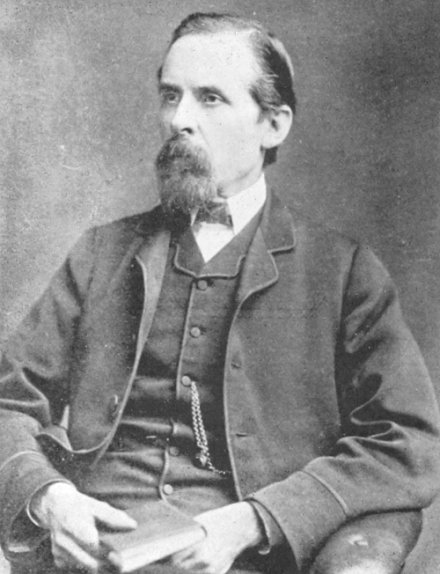
John Elliot. |
The Free Library supporters won the day
and the Fee Libraries Act (1855) was adopted
by the Corporation. Negotiations for the
transfer of books, furniture etc. in the
Queen Street building were carried out and
it was decided to take out a three year
lease on the building for use as temporary
accommodation for the new library. During
this time larger premises would be found.
The library opened on the 1st January, 1870
after the building had been completely
renovated. The new librarian was John
Elliot, who had been appointed on the 30th
September, 1868. The Corporation owned an empty
building in Garrick Street, on the corner of
Bilston Street that had previously been the
town’s police station. It had some spare
land and so was suitable for future
expansion. Behind was another empty building
that had been the town’s fire station. The
Free Library Committee became tenants of
both buildings and the empty land. In June
1872 after the buildings had been suitably
altered, the library moved from Queen Street
to Garrick Street. Around the same time the
committee agreed to purchase a large
high-class lending library at Portsmouth,
along with fittings, for just £200, which greatly
increased the number of books in the
collection. |
| In 1874 Alderman Isaac Jenks gave £100
to the committee for the conversion of the
old police cells into a large classroom,
which led to the formation of evening
classes covering a wide range of subjects.
In 1888 a chemical laboratory was built on
land at the back, as was a metallurgical
laboratory, which opened in January 1892. In
1890 there were 30 chemistry students and in
1894 there were 14 metallurgy students. |
|
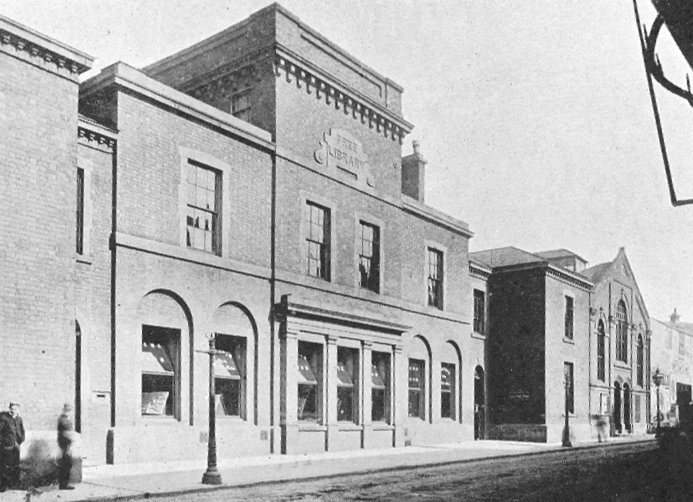
The Garrick Street
premises. |
|
In 1892 the following evening
classes were held: |
| |
Applied
Mechanics
Arithmetic
Book keeping
Carpentry and Joinery
Civil Service Preparation
Coach Building
Commercial Writing
Domestic Economy
Dress Making
Electric Lighting
French
German
Harmony and Counterpoint
Heat, Advanced
Human Physiology
Hygiene
Inorganic Chemistry
Iron and Steel Manufacture
Latin
Magnetism and Electricity |
Mathematics
Matriculation
Mechanical Engineering
Mensuration
Metallurgy
Millinery
Modern Languages
Organic Chemistry
Physiography
Reporting
Rudiments of Music
Shorthand
Singing
Sound, Light, and Heat
Spanish
Steam
Teachers' Scholarship Class
Teachers’ Tonic Sol-fa
Theoretical Mechanics
Violin |
|
|
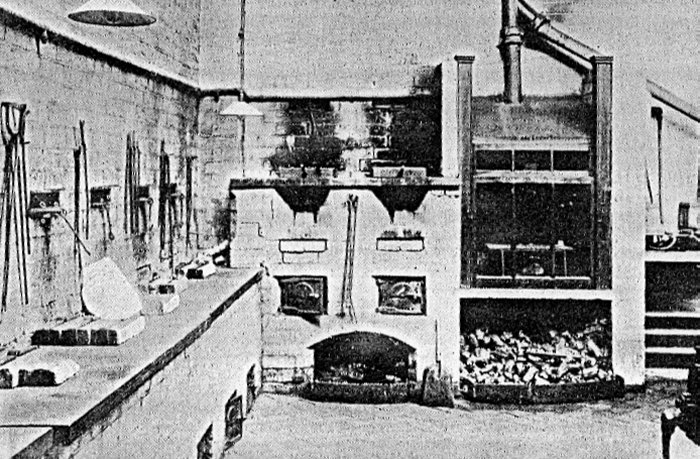
The metallurgy
laboratory. Courtesy of David Parsons. |
|
The classes were generally
well attended, but the end came in sight in 1896
as a result of a report on education in
Wolverhampton by S. T. Mander. The report
condemned the library building and its
classrooms and called for the construction of a
separate technical school.
In 1897 an Electrical
Laboratory was built and evening classes began
in boot making and carpentry. When the Central
Library opened in 1902, the old library moved to
the new premises and the old building became the
Municipal Science and Technical School. John
Elliot remained as Chief Librarian at the new
Central Library.
The new mayor in 1896,
Stephen Craddock, called for the building of a
new Technical School which would be a fitting
tribute to honour the Queen's Diamond Jubilee.
It was hoped that it would bring prestige to the town
and a site was initially earmarked for its
erection in Lichfield Street.
|
|
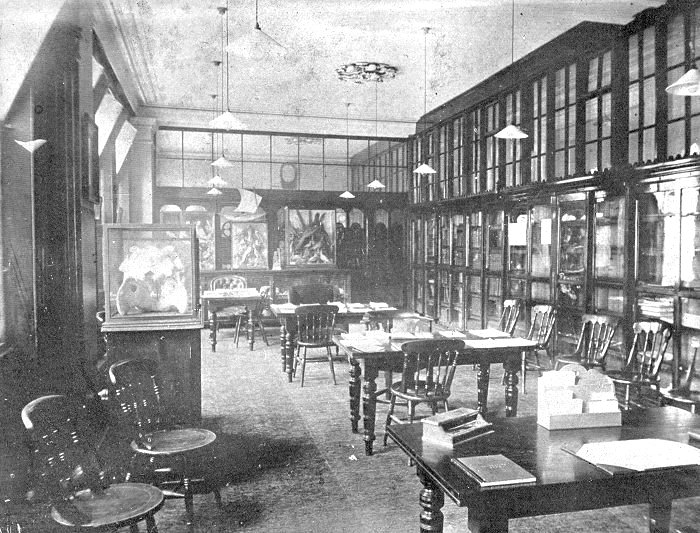
The Students'
Library. |
| The following
four photos were kindly supplied
by David Clare. They are from
his collection and show views of
the interior of the Garrick
Street site, as it was before
the Central Library opened on
the 11th February, 1902. |
|
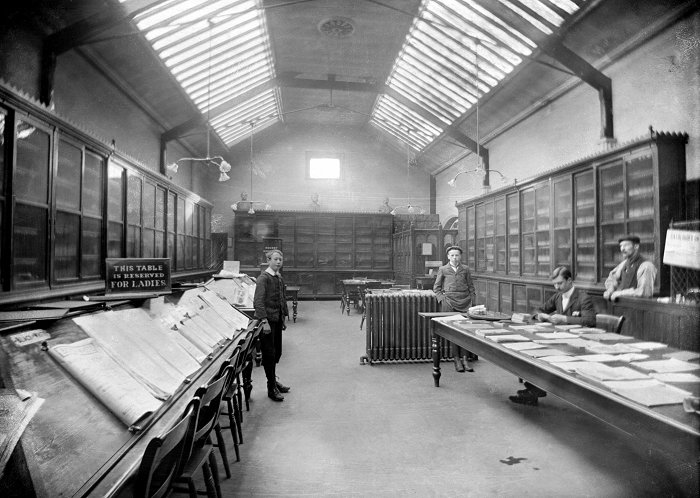
The newsroom,
with newspapers and periodicals on display.
Courtesy of David Clare. |
|
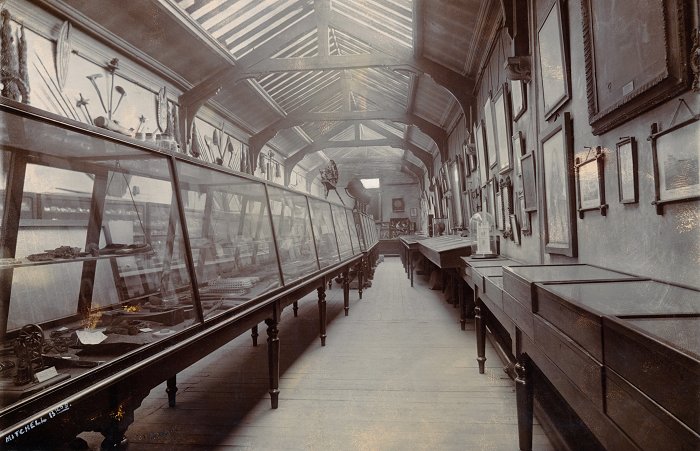
The
archaeological, botanical,
geological and industrial museum.
Courtesy of David Clare. |
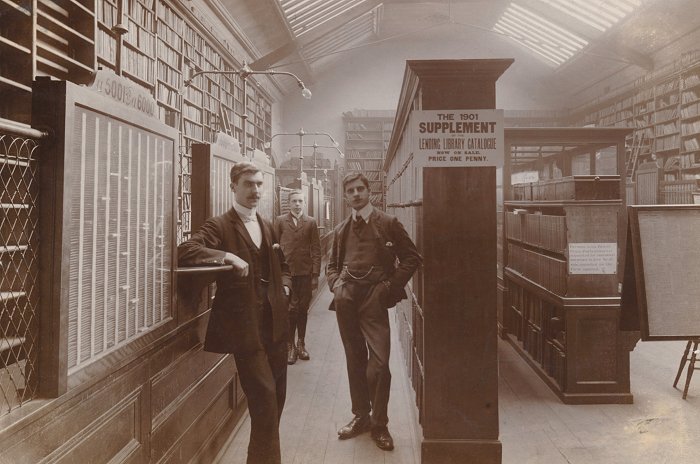
The lending
library with the 'Elliot Indicators'
that were invented by John Elliot to
enable people to quickly find any
book that they were looking for. It
was used in many libraries, both at
home and abroad. Courtesy of David
Clare. |
|

Another view
of the lending library, with John
Elliot, seated in the foreground.
Courtesy of David Clare. |
|
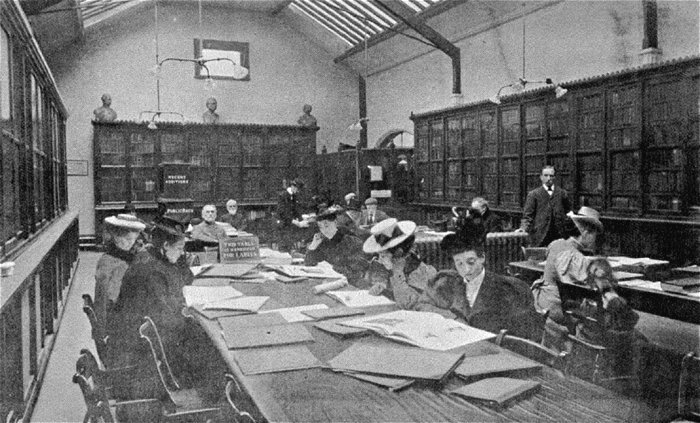
The Reference Library,
with John Elliot standing in the background. |
|
Wolverhampton Polytechnic and
University owes a great deal to
the pioneering work of John
Elliot, who organised and helped
to run the first further
education evening classes in the
city, which led to the formation
of the Wolverhampton and
Staffordshire Technical College.
John Elliot became the first
librarian at the Central Library
on Snow Hill, which opened in
1902. He continued as librarian
until his death on Tuesday the
18th April, 1911, at the age of
79. He lived with his family in
Upper Villiers Street.
Permanent and
part time staff, and courses in
1911. |
|
By the early twentieth
century, the old Deanery in Wulfruna Street,
that had become the Conservative Club, had seen
better days. Although it was regarded as one of the
town’s important historical buildings, it was
acquired from the Ecclesiastical Commissioners
in 1912, at a cost of £6,000 to provide a site
for the building of a new technical college.
Nothing happened on the site until after the
First World War, but the science and technical
classes at Garrick Street continued until the
building was demolished, at the end of the 1920s.
In the 1920 to 1921 session there 1,553 men and
women attending courses, and a total of 150
classes, preparing people for various
professions and jobs in local industry. So the
development of a new college with improved
facilities became all the more important.
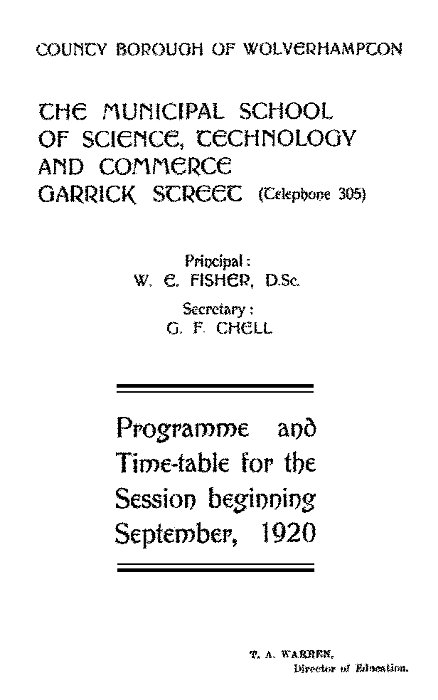

From the 1927
Wolverhampton Red Book. |
 |
|
 |
Return to
the contents |
|
Proceed to
Technical College |
|